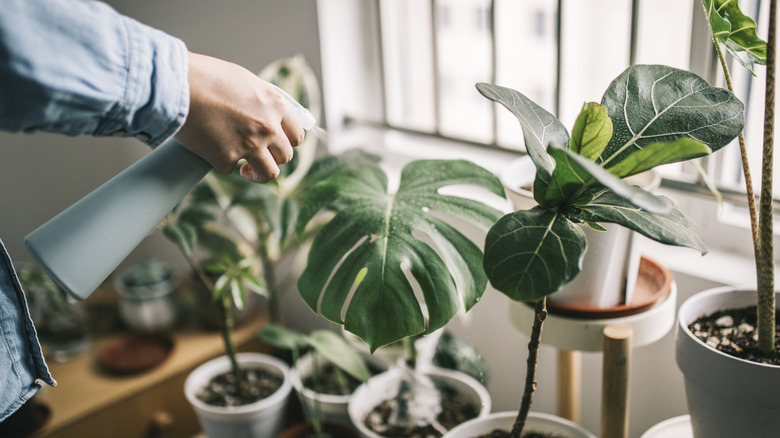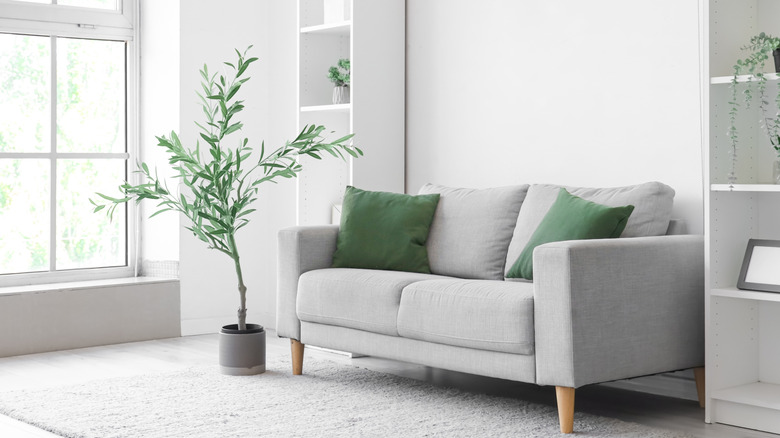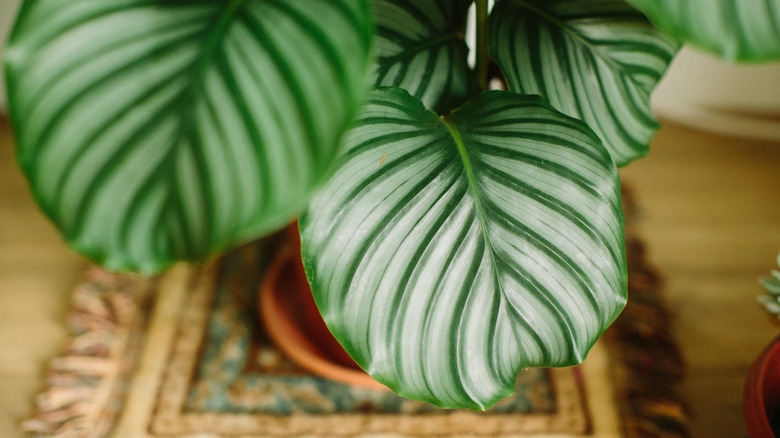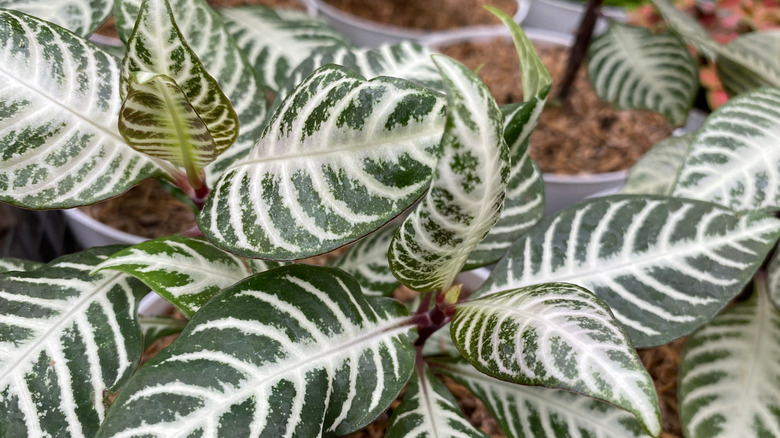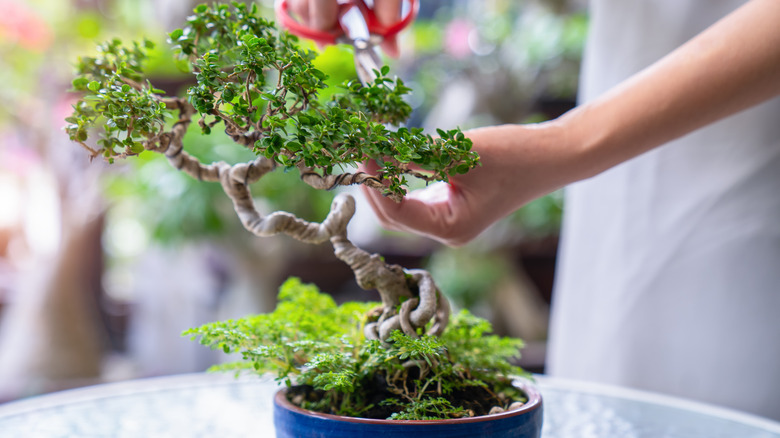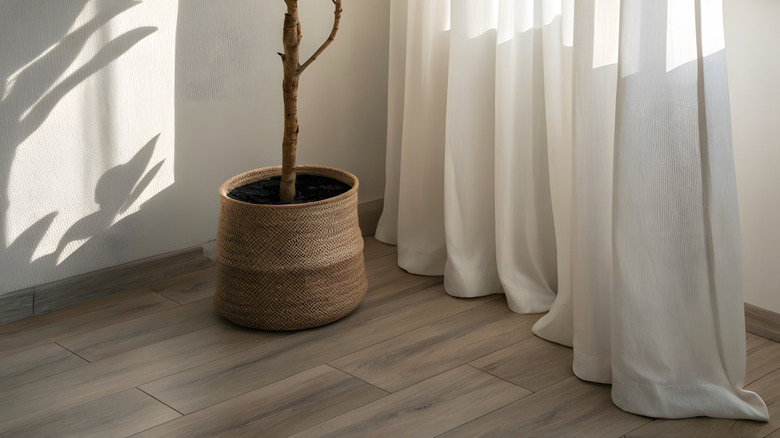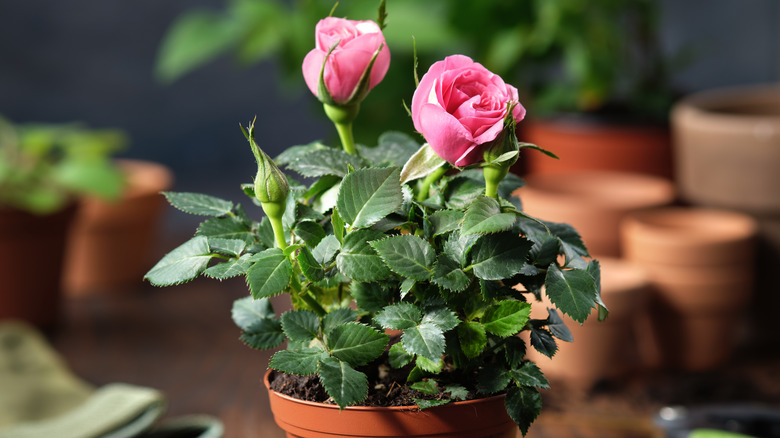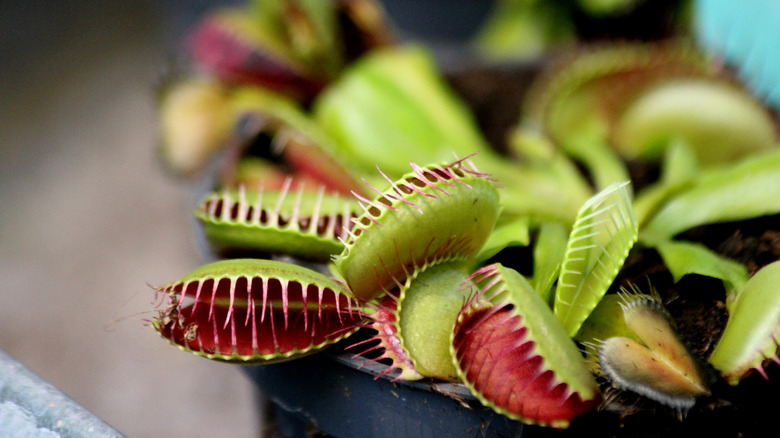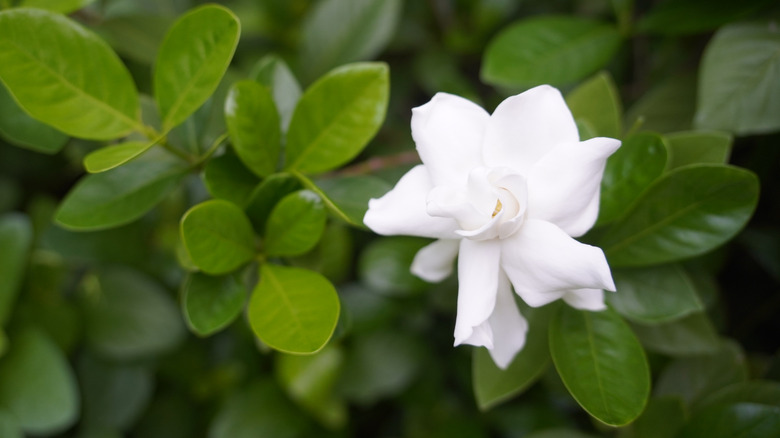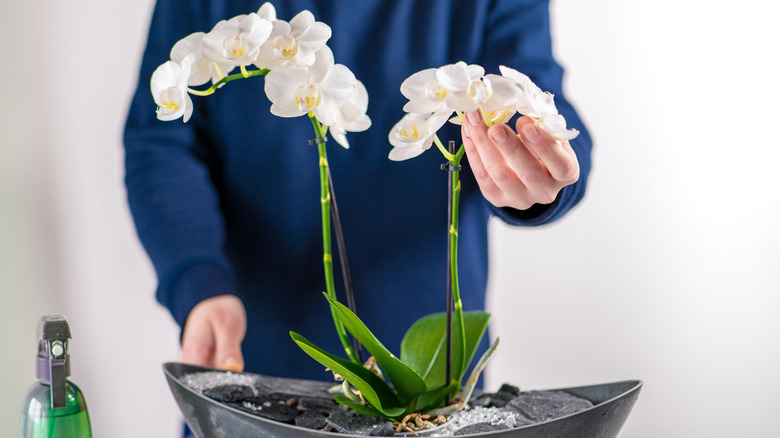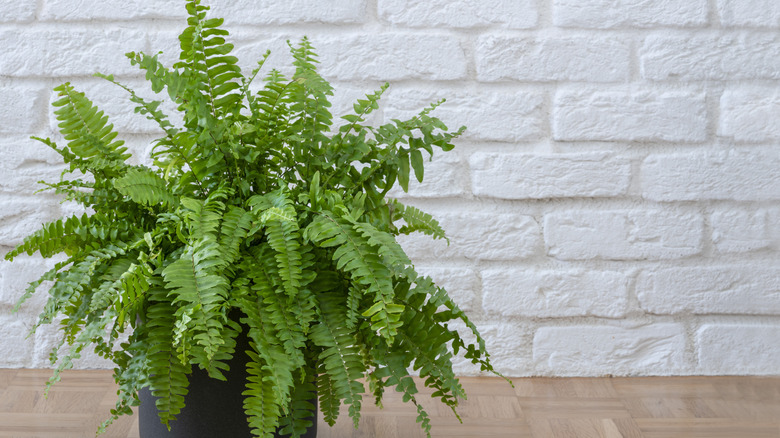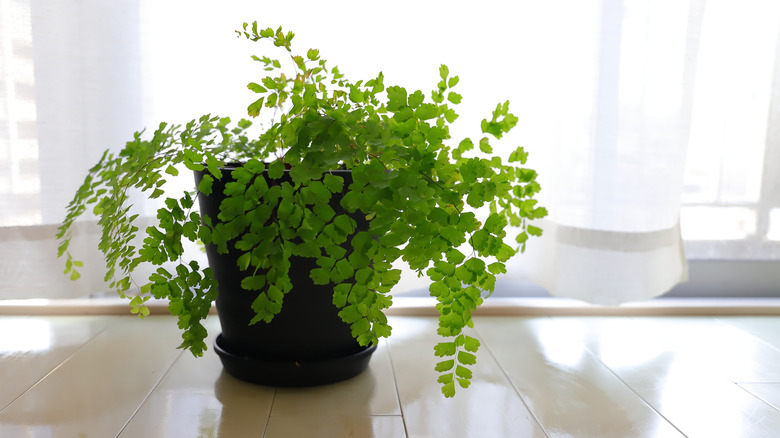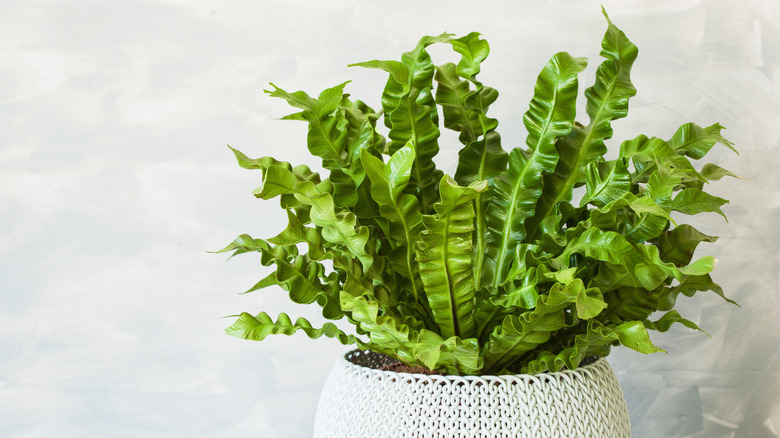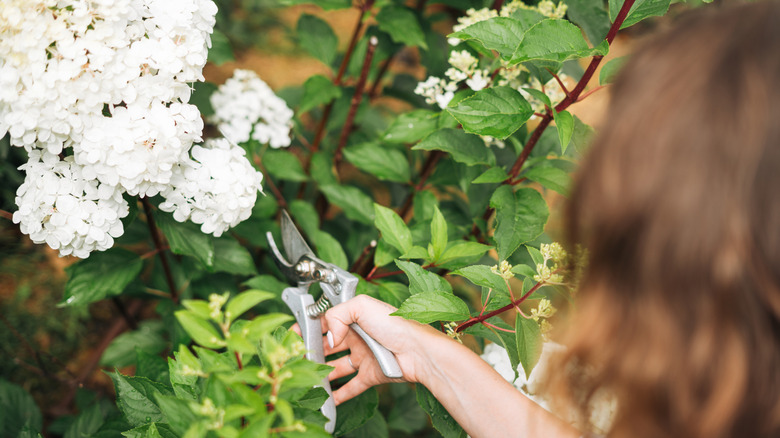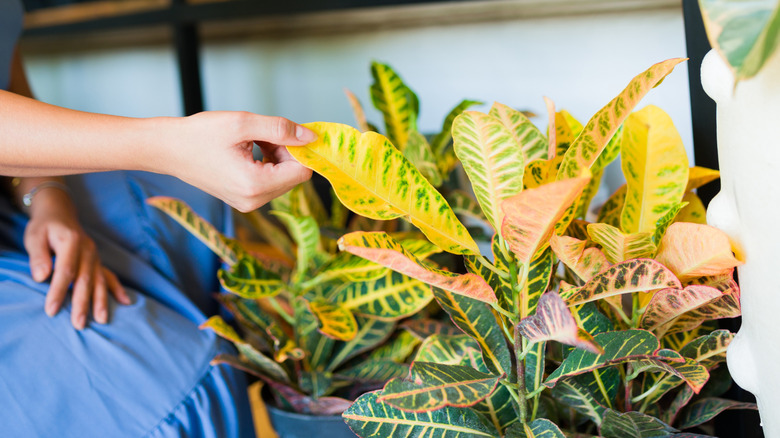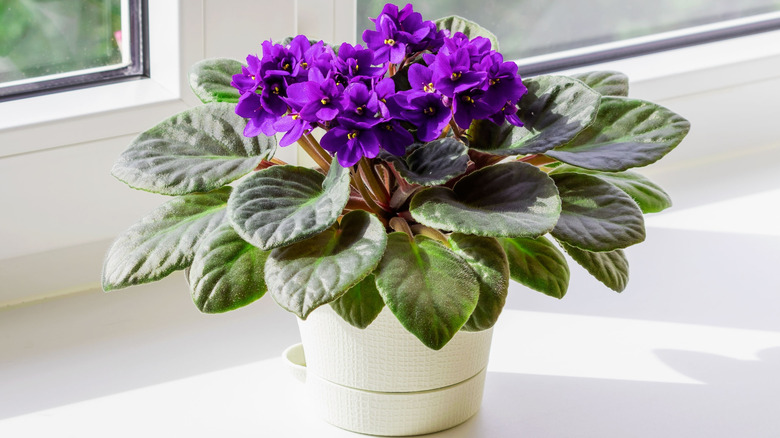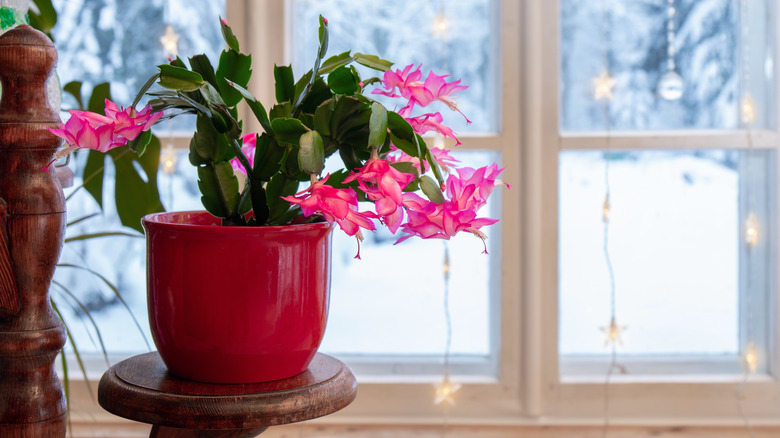Avoid These Plants If You Aren't Prepared For High-Maintenance Requirements
Indoor plants can instantly transform a home, bringing texture, color, and life into any space. While it's tempting to fill every room with greenery, it is important to note that not all houseplants are created equal. Some species demand excessive care that even experienced plant lovers can find themselves frustrated. Certain high-maintenance houseplants often need precise humidity and steady temperatures, while others require frequent pruning. Even a brief lapse in attention can hinder the growth of some of these indoor plants, making them unsuitable for frequent travelers, busy households, or anyone who prefers a more hands-off approach to plant care.
If your schedule is already very packed or if you're new to indoor gardening, skipping the houseplants listed below can help you avoid unnecessary stress, save you valuable time, and prevent wasted effort and money. But if you're up for the challenge and are confident as an experienced plant keeper, there are some practical workarounds that make caring for these finicky plants a bit more manageable. With thoughtful planning and the right strategies, even the most temperamental plants can earn a place in your home.
Olive trees require attentive pruning
Olive trees (Olea europaea) may add a touch of elegance to a sunny room, but they can quickly become unmanageable indoors without vigilant pruning. In their natural environment, these trees spread widely, and even container-grown specimens will produce long, lanky branches if left unchecked. Because they typically won't bear fruit indoors without its winter dormancy (most homes cannot provide its required conditions of 32 to 47 degrees Fahrenheit, after all), the real challenge becomes keeping their size and shape under control rather than harvesting olives. If you have pets at home, keep them away from the plant's leaves and fruit, as they contain oleuropein, which can be toxic to animals.
Regular, light pruning throughout the year prevents them from overwhelming small spaces and their leaves from dropping everywhere. If you love their Mediterranean aesthetic but not the upkeep, consider a dwarf olive variety bred for containers. This variant maintains a smaller form with less trimming.
Calathea are very picky about moisture
Calatheas (Goeppertia orbifolia) are prized for their beautiful, patterned leaves, but they also demand humidity levels of around 60% or more. Their broad leaves must also be dusted regularly so they can efficiently perform photosynthesis. When it comes to watering, they are unusually sensitive to tap water, as minerals, such as fluoride, can cause them to crisp at the edges. They prefer consistent temperatures between 65 and 70 degrees Fahrenheit, and fluctuations in heat or moisture can undo weeks of hard work.
To keep them thriving, place them near a reliable humidifier or set them on a pebble tray with water to maintain consistent moisture in the air. In addition to doing this, water these with distilled or rainwater to avoid mineral build-up. If you like the tropical look but prefer a plant that is less finicky, a prayer plant (Maranta leuconeura) provides a similar aesthetic without as much fuss.
Zebra plants need steady conditions
Zebra plants (Aphelandra squarrosa) are among the most temperamental of tropical plants, widely considered to be short-lived. They quickly drop leaves and can develop scorched patches if exposed to air cooler than 65 degrees Fahrenheit or if humidity dips even briefly. It can also mean that it is receiving too much sunlight. So, it's essential for them to stay inside their comfort zones.
To take care of them, think of mimicking their rainforest origins with steady warmth and high humidity. A bathroom or kitchen, where humidity tends to stay higher, is often the best indoor location. Alternatively, placing the pot on a pebble tray or misting the plant can prevent the stress from dry air that causes it to lose its leaves. Using acidic, well-draining soil helps, but don't allow its soil to completely dry out. Even with careful monitoring, zebra plants can decline quickly, so for a similar look with less risk, choose hardier tropicals like bromeliads.
Bonsais require very precisely-timed care
They are admired for their sculptural beauty, but growing and caring for a bonsai tree requires near-daily effort. Checking on them that often is simply too much for some. To keep their tiny, delicate proportions, they must be pruned frequently and their roots must be trimmed at the same time each year (ideally spring) to prevent them from outgrowing their containers. They also must be repotted at the proper time of the year, depending on their variety: the juniper bonsai (Juniperus) are more flexible, while pine bonsai (Pinus) must be repotted in late winter. Their needs also change with the seasons. They need less water in the fall, a cool dormant period in winter, and renewed care in spring.
For busy plant lovers who admire bonsai, opt for a self-watering pot that could provide consistency. If you're not into the upkeep, look for an easier jade plant (Crassula ovata). Those trained in bonsai style can mimic the plant's aesthetic with far fewer care requirements.
Fiddle leaf figs demand lots of light and regular cleaning
The fiddle leaf fig (Ficus lyrata) is famous for its dramatic foliage, but equally dramatic are its reactions to stress. Without consistent, very bright light, ideally from the morning sun, it quickly shows its displeasure with yellowing, leaf drop, or stunted growth. The plant loves humidity as well, and if placed next to a heat source like a register or vent, you may find brown discoloration along the leaf edges. Its broad leaves are also prone to collecting dust and dirt, so they must be cleaned regularly.
If you do decide to welcome the fiddle leaf fig into your home, make sure to place it in a room where it will receive consistent bright light. Giving it a home next to other plants or a humidifier can also help it thrive. Finally, make sure to wipe its leaves every few weeks with a damp cloth to remove dust.
Miniature roses need ideal conditions and close monitoring for pests
Miniature roses are especially challenging to keep as houseplants. Although small, they can still get any disease that affects larger roses, meaning that they need protection from pests and the weather. Because they have shallow roots, watering later in the day instead of the morning can leave moisture lingering on the plant, which welcomes fungal disease. In addition to this, they're particularly vulnerable to spider mites, which leave fine webbing and discolored leaves.
To thrive long-term, miniature roses generally do best outdoors once summer arrives, where sunlight and airflow better meet their needs. When transitioning outdoors, start by placing them in deep shade for several days, then gradually increase sun exposure. Don't forget to inspect foliage frequently for mites, spraying with insecticidal soap if infestations appear. Because their shallow roots dry out quickly, miniature roses need steady watering. Even with proper care, they demand far more attention than most houseplants.
Venus flytraps have very specific soil and humidity needs
The Venus flytrap (Dionaea muscipula) is captivating but extremely sensitive to its surroundings, specifically the temperature and humidity. Unlike most houseplants, it thrives in a nutrient-poor environment. After all, it evolved in dry forests, swamps, as well as lakes and canals lacking in oxygen. Tap, bottled, and even filtered water may also contain too much salt for the carnivorous plant.
In order for the Venus flytrap to survive indoors, it's important to mimic its natural habitat. This can be done by doing the following: exclusively using distilled or rainwater, providing strong natural light or a grow light for 12 to 16 hours a day, and replicating its sunny, bog-like environment. It also needs nutrient-poor soil like sphagnum peat moss or coir (shredded coconut husks). Because it thrives in this type of soil, it is important to note that fertilizers will slowly kill it.
Gardenias are tough to make bloom and are susceptible to pests
Gardenias (Gardenia jasminoides) are celebrated for their intoxicating fragrance and glossy appearance, but that beauty comes at a price. They're also notorious for "bud drop," where flower buds fall before opening if humidity or temperature fluctuates even slightly from the narrow range they prefer. For flower buds to fully form, it is essential to have night temperatures from 50 to 55 degrees Fahrenheit, a tough task indoors. On top of this, gardenias are highly susceptible to pests such as whiteflies, aphids, and spider mites, which can stunt growth and leave leaves yellowed or cause them to drop. Even experienced growers find them demanding, as they often react dramatically to small environmental shifts.
To succeed with gardenias indoors, provide a rich, acidic potting mix, as they prefer a pH of less than 6.0. If pests are present, treat any infestations promptly using insecticidal soap or horticultural oil. Regularly monitor humidity, temperature, and check leaves for signs of pests, as maintaining consistent conditions is the key to keeping their buds intact and blooms fragrant.
Orchids may need to be moved frequently to meet lighting needs
Orchids (Phalaenopsis spp.) are a popular gift because of their striking blooms, but their care can frustrate even the most experienced plant owners. First of all, they're notoriously picky about light. While they thrive in bright but diffused conditions, strong, direct sun can burn their leaves. Their potting medium is another challenge. They are typically grown in bark-based mixes that break down over time, and if not replaced every year or two, the compacted bark suffocates roots and leads to decline.
To keep an orchid thriving and consistently growing, you may need to rotate it around the home to maintain diffused light, as sunlight angles and intensity shift throughout the day and the seasons. In warmer spots, provide airflow to prevent overheating. You'll also need to repot the plant with fresh bark when it stops draining well.
Boston ferns require high humidity and regular cleaning
Boston ferns (Nephrolepis exaltata) are notoriously demanding when it comes to humidity. Let levels dip even briefly, and the plant may turn brown. Their elegant fronds may look low-maintenance, but they also collect dust, which attracts mites and pests, making maintenance more involved.
Because it's difficult to significantly raise indoor humidity, the key is to manage and reduce moisture stress. Focus on consistent watering and place a humidifier nearby if your home is dry. Rinse fronds occasionally with lukewarm water to remove dust and discourage mites. If you're not prepared to monitor humidity closely, a cast-iron plant (Aspidistra elatior) or parlor palm plant (Chamaedorea elegans) can provide similar greenery with far less effort.
Maidenhair ferns demand soil testing and pH monitoring
Maidenhair ferns (Adiantum spp.) are among the most delicate houseplants, known for their graceful, fan-shaped fronds that add a touch of elegance to any room. However, they're also notoriously difficult to grow indoors. Different species, from the fan maidenhair to the southern maidenhair, have opposite pH preferences, making regular soil testing essential, and this is something not every plant grower wants to do. Their fronds can also brown and crisp if their soil dries out even briefly, if humidity is too low, or if they get too much sun.
To avoid disaster, test soil pH regularly and adjust it by adding ground limestone or oyster shells if findings show that it is too acidic. Keep maidenhair ferns in part to full shade and humid conditions where the soil stays evenly moist. They require a humidity level of around 50% to survive indoors, so you may need to supplement moisture with a humidifier.
Bird's nest ferns are very sensitive to light and dryness
The lush Bird's nest fern (Asplenium nidus), native to Southeast Asia, adds a vibrant flair to any indoor garden. Its wide fronds can create a stunning tropical centerpiece, but this beauty comes with a price. They're incredibly sensitive, and they will quickly yellow or brown and even stop growing if exposed to direct sun or allowed to dry out too much. They also need lots of humidity, so they may require moisture supplementation during the dry, winter months.
To keep this tropical fern thriving, grow it in consistently moist soil and place it in a shaded or low-light area that mimics its natural habitat. Manage pests manually, such as wiping or rinsing fronds gently with lukewarm water, as insecticides can cause damage to the foliage. If all this sounds too much for you, a heartleaf philodendron (Philodendron hederaceum) provides a comparable aesthetic with fewer worries.
Florist hydrangeas require close monitoring and specific conditions to achieve repeat blooms
Florist hydrangeas are commonly forced to bloom out of season and ahead of schedule, which makes them extra sensitive. A lack of water can lead to wilting or bud loss. It also takes diligent care to encourage repeat blooms. Because of their fragility, these plants are best suited for gardeners willing to closely monitor their environment.
Coaxing them to bloom indoors requires precise timing. Keep them outside through the fall, then bring them inside for winter before the first frost. You'll need to remove the leaves and keep it at a temperature of 35 to 40 degrees Fahrenheit for six weeks. After this cooling period, move the plant to a cool room that gets plenty of sunlight but drops to around 60 degrees Fahrenheit overnight. After about four months, the plant should flower again. If you don't want to take on this intense routine, but you're still looking for a pop of colorful indoor blooms, a lower-maintenance flowering plant like kalanchoe is a better option.
Crotons need very balanced light conditions to maintain their vibrancy
Crotons deliver bold, colorful foliage but are extremely sensitive to water balance. Soggy soil will rot their roots, while dry conditions can trigger mass leaf drop. They thrive in warm, humid weather and like bright sunlight, and inadequate light levels can cause their vibrant colors to fade. On the other hand, overexposure can have the same effect, also hindering foliage growth. These plants can also be toxic, so they should be placed out of the reach of pets and children. They also produce a sap that can stain nearby surfaces, so be mindful of their placement when it comes to upholstery and rugs.
To avoid constant stress, pay attention to the croton's soil, monitoring it closely to keep conditions stable and to make sure it isn't dry for too long. Make sure to place it in a bright, humid room, and place it near the bathroom while taking a hot shower from time to time to expose it to its steam. If you love colorful foliage but don't want the extra fuss, opt for a pothos or dracaena. Both offer striking leaves and are far less finicky about moisture and light.
African violets are picky about watering techniques and need regular grooming
African violets (Saintpaulia ionantha) demand precision, as the smallest mistakes in watering can cause soluble salt buildup that burns roots, which can potentially lead to the wilting of the entire plant. The plant can die from overwatering or underwatering, and to know exactly how much water your plant needs, take note of its soil type, pot size, plant size, and environmental conditions to create a watering routine. Meanwhile, its fuzzy leaves also trap dust, potentially harming blooms.
To keep them thriving, many growers water from the bottom of the pot, but it's important to occasionally water from the top as well to remove dust from the leaves and wash out salts. A self-watering pot is also recommended, but it is important to observe in the initial stages if too much or too little water is coming in. Lastly, clean the foliage gently with a soft makeup or artist's brush to remove dust without bruising the delicate surface.
Christmas cacti require significant periods of coolness and darkness to bloom
Christmas cactus (Schlumbergera spp.) owes its holiday blooms to very precise conditions. Cooler fall temperatures and long nights are needed to trigger flowering. Skipping this routine, or treating it like a desert cactus with direct sunlight and dry soil, can cause buds to drop before they open. Since they originally come from Brazil's coastal mountains, a region known for its humid forests, this type of cactus requires high amounts of moisture.
If you still decide to care for a Christmas cactus and welcome one into your home, increase humidity by grouping it with other plants or using a humidifier. Starting in mid-September, give the plant about 16 hours of uninterrupted darkness and cooler temperatures each day for six weeks to ensure vibrant blooms for the holidays. If this schedule sounds too demanding, a Thanksgiving cactus, often mislabeled as a Christmas cactus, is relatively easy to grow indoors and needs fewer hours of darkness.
